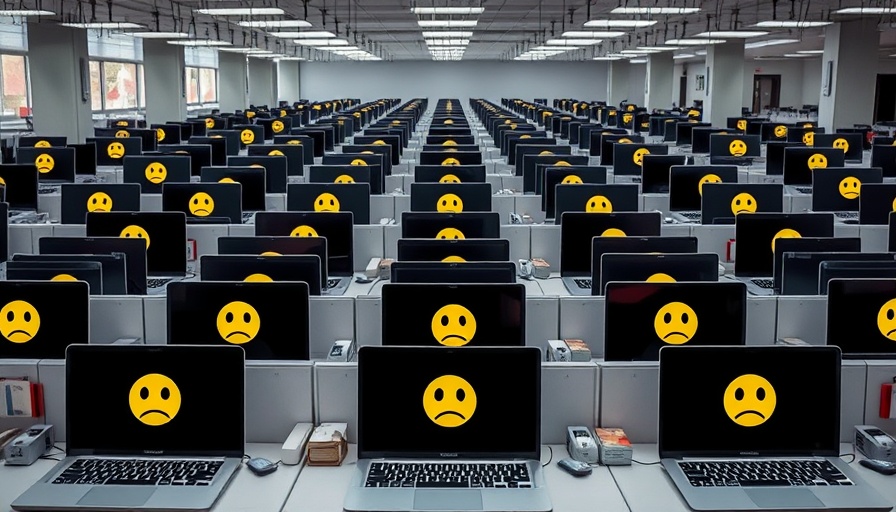
Revealing the Hidden Crisis in Mental Health Workplaces
In a shocking revelation, staff at one of the top mental health hospitals have opened up about their toxic work environment, painting a picture of distress that seems contradictory to the institution's mission. Reports of managers making staff doubt their sanity have surfaced, raising critical questions about workplace culture and the mental well-being of employees tasked with caring for others. This troubling environment not only affects employee morale, but also calls into question the quality of care provided to patients.
The Importance of Healthy Work Environments
Every profession requires a certain level of emotional resilience, but mental health workers particularly face a unique challenge. Their role demands not only intelligence and skill, but also a nurturing demeanor that can be severely tested in toxic environments. When employees endure stress and anxiety from within their own workplace, their ability to perform effectively diminishes, leading to a negative cycle that impacts both staff and patients.
Why It Matters: The Ripple Effect of Workplace Toxicity
Toxic workplaces contribute to daily stress, leading many employees to develop physical ailments over time. Research indicates that environments where staff feel pressured can also lead to burnout—a significant risk factor for mental health professionals. This cycle of pressure compromises not only the well-being of the caregivers but also jeopardizes the quality of care patients receive, placing everyone at risk. Understanding this connection is crucial for those in leadership positions to realize that investing in a healthy workplace can result in tangible benefits for all involved.
Real Stories Highlight the Urgent Need for Change
Current and former employees have shared their experiences, pulling back the curtain on how such toxicity manifests. Stories reveal broken communication channels, a lack of support from management, and expectations that make it difficult to succeed. One nurse described her experience: "It was common to feel like you were walking on eggshells. Status quo became a 'normal' way of working, which was detrimental to both our mental health and our patients’." These accounts exemplify how critical it is to address and rectify these issues within mental health facilities.
Building a Better Future: Solutions to Workplace Toxicity
Change must begin at the top. Leaders can implement several strategies to cultivate a supportive workplace culture. Initiatives such as open-door policies, mental health days, regular feedback mechanisms, and team-building activities promote transparency and encourage a healthy dialogue. Moreover, providing mental health resources for employees can significantly reduce feelings of isolation and despair. By emphasizing the importance of self-care and well-being among staff, these facilities can enhance job satisfaction and patient outcomes alike.
Taking the First Steps Forward
For anyone currently in or considering a career in mental health, awareness of workplace chemistry is paramount. Knowledge empowers individuals to seek out workplaces that prioritize their well-being. Advocating for change, whether through speaking up about concerns or suggesting workplace improvements, can set the stage for a healthier, more productive environment. As employees, it is also vital to care for one another and foster a collegial culture that allows for venting and supportive communication.
The Way Forward: Change Begins with Awareness
This insight into the culture of mental health facilities is not just a call for better workplaces; it is an urgent reminder that our mental health systems must reflect the values they preach. By addressing workplace toxicity, we can pave the way for a more compassionate and effective mental health environment, ensuring that both staff and patients thrive.
Let’s challenge ourselves to prioritize mental wellness, not just as an abstract ideal, but as a practical thrust within our workplaces. By doing so, we take significant steps towards fostering healthier work culture for everyone.
 Add Row
Add Row  Add
Add 




Write A Comment